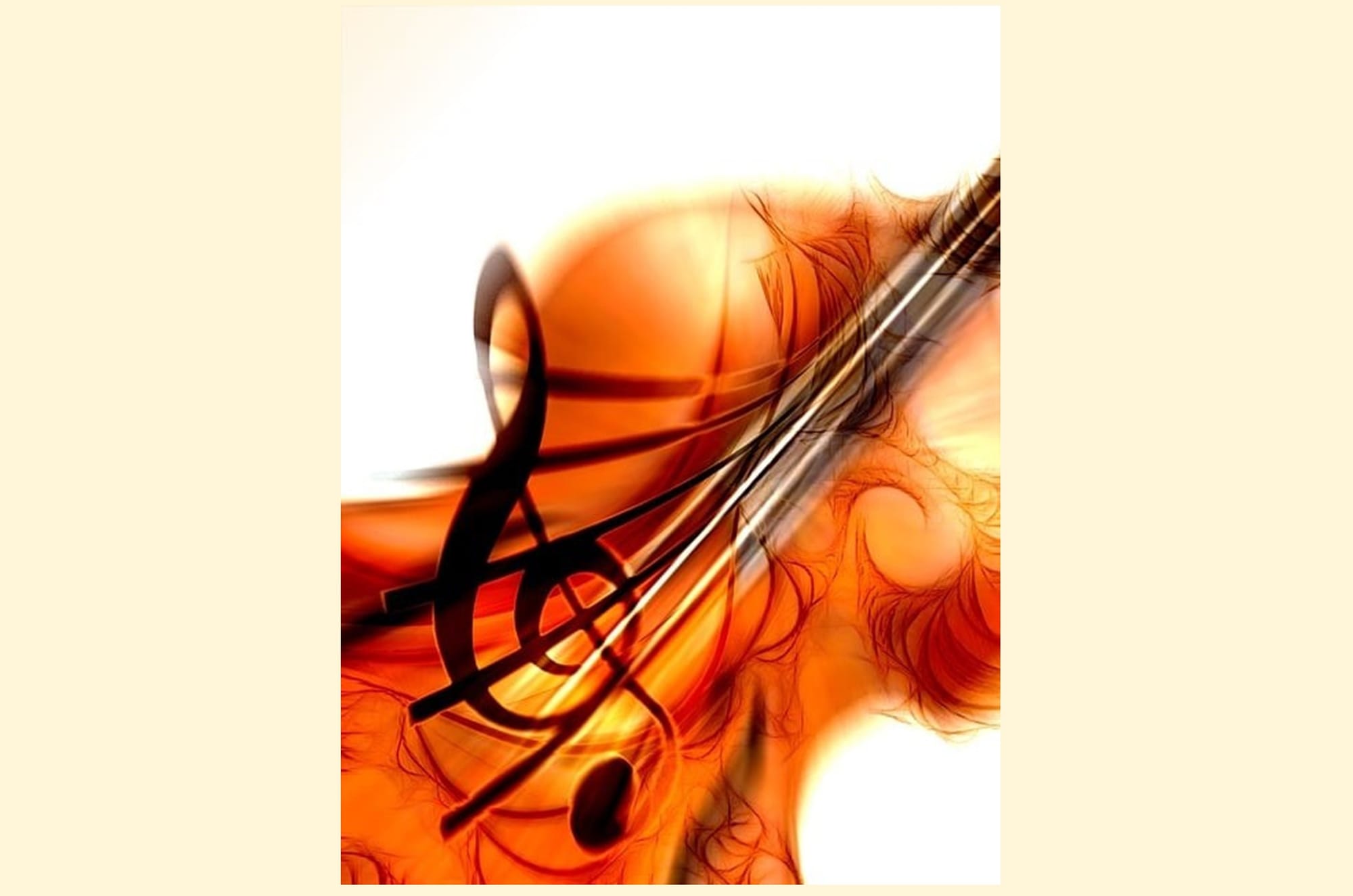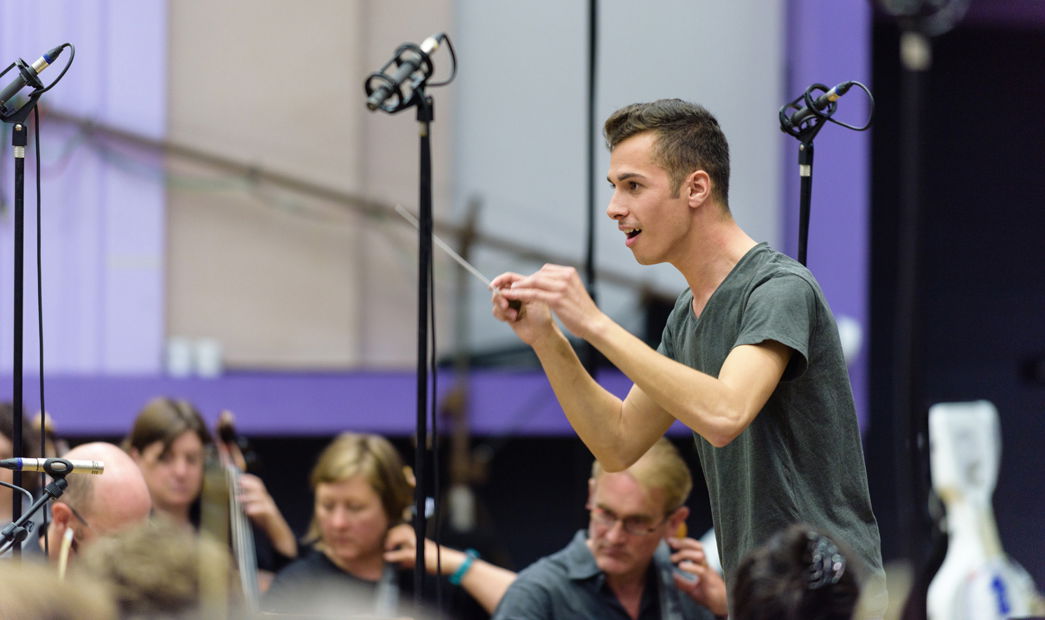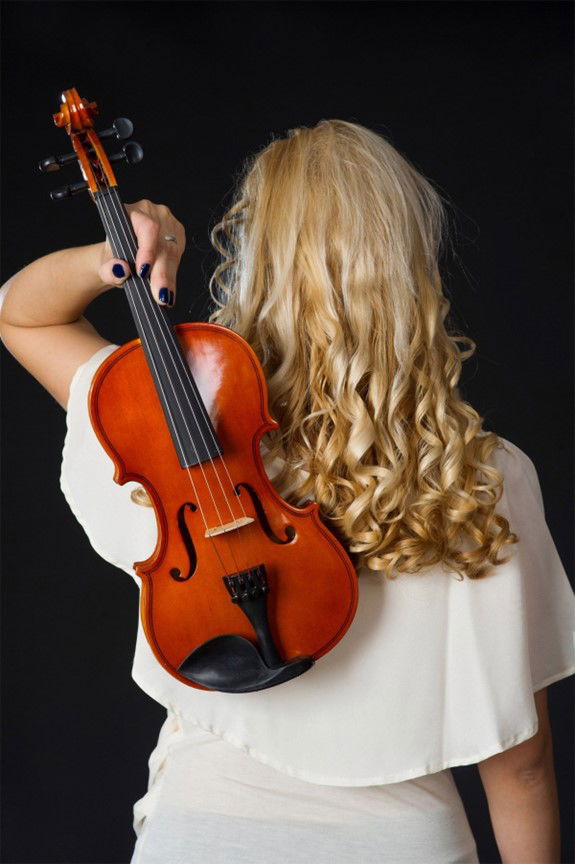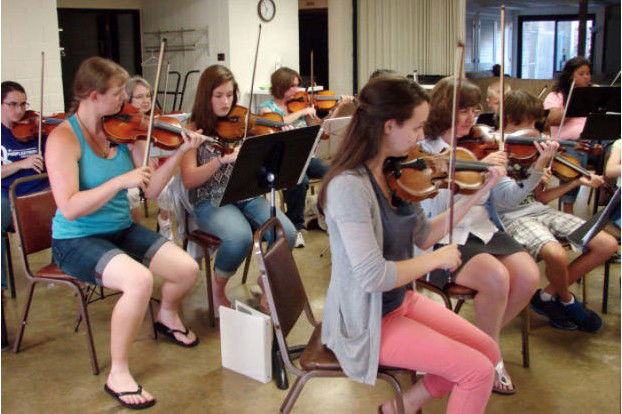String Orchestras Improve by Playing an Original Composition

In the realm of music, the enchanting melodies and harmonies created by a string orchestra have captivated audiences for centuries. The timeless appeal of classical compositions has been a hallmark of their repertoire, but just as art evolves over time, so must music. Exploring new compositions offers string orchestras a unique opportunity for growth, development, and artistic enrichment. Let’s examine the ways in which a string orchestra can improve by embracing new compositions.
Preserving Tradition while Embracing Innovation:
String orchestras have long been associated with the elegance and refinement of classical music. The works of great composers like Bach, Mozart, and Beethoven are cherished and celebrated. However, this reverence for tradition should not hinder the orchestra's ability to evolve. Introducing new compositions alongside the classics can maintain a respectful nod to the past while infusing the ensemble with a fresh vitality.
The early masters of music like Bach and Handel made sense out of a wide assortment of musical practices and ways of writing it down and, by procedures and practice, assembled them into what we now know as music theory. Later musicians like Beethoven, Wagner and Schoenberg carefully chose which of these “rules” to break to create new and innovative music for their time. New compositions continue to push the envelope while maintaining a recognizably historic sound.
Broadening Musical Horizons:
Playing new compositions exposes string orchestra members to a diverse range of musical styles, techniques, and cultural influences. Just as a painter learns from experimenting with different colors and brushstrokes, musicians benefit from the exploration of varied musical elements. By venturing beyond the confines of the familiar, orchestra members expand their musical horizons and develop a deeper appreciation for the art form.
As time goes on, composers have a broader palette of musical styles, devices, forms and playing techniques from which to choose. Besides the traditional arco and pizzicato styles of playing, there are more modern ways to play, such as Col legno (with the wood part of the bow), “Bartók” or “snap” pizzicato (The string is lifted with two fingers of the right hand so that it snaps back onto the fingerboard when let go), Tremolos of different sorts, and even playing Behind the Bridge (creating an indeterminate pitch).
Fostering Creativity and Artistic Expression:
New compositions often challenge performers to explore novel interpretative approaches. Unlike well-established classics with established performance conventions, new pieces allow musicians to contribute their own insights and interpretations. This fosters a sense of creativity and artistic expression within the ensemble, enabling musicians to imbue their performances with personal emotions and perspectives.
Christian musicians can offer their playing of a new piece as an act of worship, even if it wasn’t written with any spiritual context in mind. The scriptures contain more than one admonition to sing (play) a new song to the Lord.

Collaboration with Contemporary Composers:
Collaborating with contemporary composers creates a symbiotic relationship between the orchestra and the creators of new compositions. Composers benefit from the orchestra's expertise in bringing their music to life, while the orchestra gains the privilege of working directly with the creative minds behind the compositions. This collaboration allows for dynamic exchanges of ideas, resulting in performances that resonate deeply with both the musicians and the audience.
It is also a delightful experience for both the orchestra and the composers or arrangers if they are able to visit with the orchestra that will be playing their new piece. The composer can elaborate on the source and meaning behind the composition as well as help the orchestra work out any potential challenges that might be inherent in the piece. He or she could conduct the first rehearsal or two and possibly be able to hear the presentation of the piece at the concert.

Engaging Audiences with Novelty:
Audiences, too, reap the benefits of new compositions. While classical compositions have a timeless appeal, presenting fresh pieces offers concertgoers a novel experience. The anticipation and excitement of hearing something new can reinvigorate interest in orchestral performances. Engaging with contemporary compositions also bridges the gap between generations, appealing to younger audiences who may connect more readily with modern musical languages.
Occasionally, the novelty of a new piece can evoke a sense of fun, humor, melancholy or even tragedy in ways not used before. In traditional classical pieces, key changes and time signature changes happened when a new movement of a piece started, as in a sonata allegro form. Contemporary composers think nothing of changing either of those in the middle of a single movement piece, especially if that piece is written with a student or community String Orchestra in mind.
Challenges and Growth:
While playing traditional works has the advantage of providing a sense of familiarity, they can also present a feeling of being in a rut. A new composition delivers a sense of adventure and freshness, not only to the musicians but to the audience.
Even though embracing new compositions brings numerous benefits, it is not without its challenges. Modern compositions often feature unconventional harmonies, intricate rhythms, and experimental forms that can be demanding for both performers and listeners. However, these challenges provide an avenue for growth. By tackling complex compositions, string orchestras enhance their technical skills, expand their interpretative abilities, and cultivate resilience in the face of such artistic challenges.
Salt Cellar Creations has composed a few pieces that offer Novelty, Beauty, Challenges and Growth. The best example of Novelty is the quirky tune called The Awkward Marionette. It’s in 5/4 time and utilizes arco and pizzicato by different parts, often at the same time. One of the most Beautiful pieces is entitled Golden Morning. The melody is reminiscent of an old Appalachian folk melody, but the harmonies are much more contemporary. A beautiful but Challenging score is Dance at Sunrise. Even though the melody sounds straight forward enough, the harmonies are a bit eccentric and require the musicians to play an assortment of accidentals. A Salt Cellar composition that offers a great opportunity for growth is A Royal Affinity. There are a few skips that will take a little extra practice, as well as a couple of time signature changes that, when played properly, off a fascinating listening experience.

Strengthening Ensemble Dynamics:
Rehearsing and performing new compositions fosters a sense of camaraderie and teamwork within the orchestra. As musicians collectively navigate uncharted musical territories, they must communicate, collaborate, and problem-solve. This strengthens ensemble dynamics, enhancing the group's cohesion and ability to work harmoniously together.
In order for the whole ensemble to be able to play the new music well requires the first and section chair holders to learn, practice and know the music first so that they can be fulfill their roles as good leaders. Then, they can be better communicators, collaborators and problem-solvers. For more information on best practices for selecting these positions, see my blog article entitled How to Select First and Second Chairs in a String Orchestra.
Sometimes, musicians can find new ways to play their instruments to achieve the new sounds required by the music. They would then want to share these discoveries with their associates. There are already quite a few ways for string players to finger and bow their instruments and some modern composers are looking for more ways for string players to coax new sounds from their instruments.
Offering a Means of Earning a Living for Composers:
Composers love their work, but they also like to eat and have a roof over their heads. There is a movement that encourages people to buy locally to support small businesses of all sorts. This can also apply to composers and arrangers, most of whom are small businesses trying to earn a living by exercising their God-given talents.
Conclusion:
In conclusion, the evolution of a string orchestra hinges upon its willingness to embrace new compositions. While classical masterpieces form the foundation of its repertoire, exploring fresh musical landscapes presents an opportunity for growth, enrichment, and artistic transformation. By striking a balance between tradition and innovation, string orchestras can continue to captivate audiences, inspire musicians, and contribute to the ever-evolving tapestry of musical expression. As the strings resonate with new compositions, the orchestra harmonizes with the spirit of creativity and progress, embodying the essence of musical evolution.
Salt Cellar Creations understands the beauty and power that a String Orchestra can convey, especially when it’s playing a new piece, and has a growing library of original works and arrangements. Find out more about what Salt Cellar Creations has to offer for String Orchestras HERE. Explore the available music HERE.
SCC can also compose an original piece for you or do a custom arrangement for you. There are two ways that this can be done; one is much more affordable than the other. And SCC is always looking for ideas of pieces to arrange or suggestions for original pieces.
We have sold music not only in the US but in Canada, the United Kingdom, France, Australia, New Zealand and Austria. Please visit the WEBSITE or CONTACT US to let us know what we can do for you!